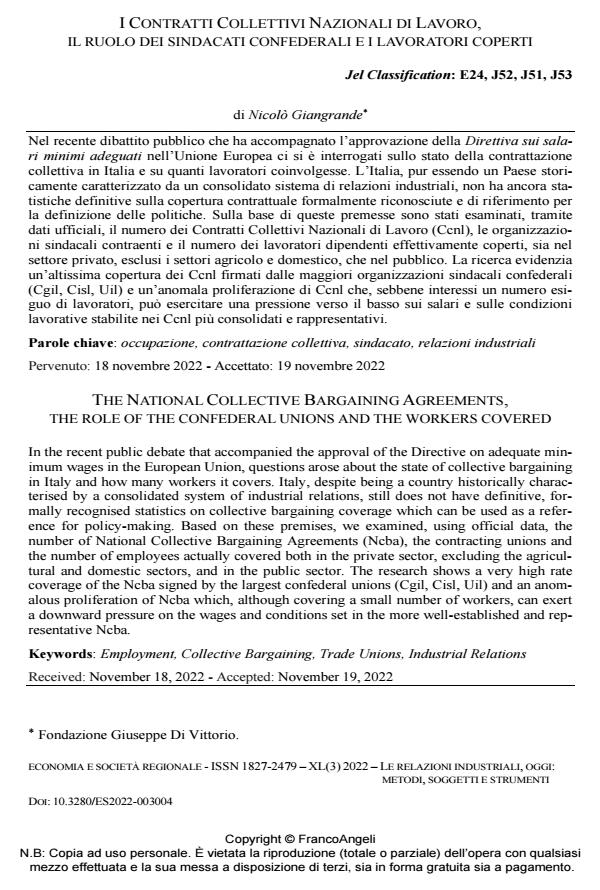The national collective bargaining agreements, the role of the confederal unions and the workers covered
Journal title ECONOMIA E SOCIETÀ REGIONALE
Author/s Nicolò Giangrande
Publishing Year 2022 Issue 2022/3
Language Italian Pages 10 P. 33-42 File size 335 KB
DOI 10.3280/ES2022-003004
DOI is like a bar code for intellectual property: to have more infomation
click here
Below, you can see the article first page
If you want to buy this article in PDF format, you can do it, following the instructions to buy download credits

FrancoAngeli is member of Publishers International Linking Association, Inc (PILA), a not-for-profit association which run the CrossRef service enabling links to and from online scholarly content.
In the recent public debate that accompanied the approval of the Directive on adequate mini-mum wages in the European Union, questions arose about the state of collective bargaining in Italy and how many workers it covers. Italy, despite being a country historically characterised by a consolidated system of industrial relations, still does not have definitive, formally recog-nised statistics on collective bargaining coverage which can be used as a reference for policy-making. Based on these premises, we examined, using official data, the number of National Collective Bargaining Agreements (Ncba), the contracting unions and the number of employ-ees actually covered both in the private sector, excluding the agricultural and domestic sectors, and in the public sector. The research shows a very high rate coverage of the Ncba signed by the largest confederal unions (Cgil, Cisl, Uil) and an anomalous proliferation of Ncba which, although covering a small number of workers, can exert a downward pressure on the wages and conditions set in the more well-established and representative Ncba.
Keywords: Employment, Collective Bargaining, Trade Unions, Industrial Relations
Jel codes: E24, J52, J51, J53
- Explaining political turnarounds on minimum wages: the Italian case in a comparative perspective Guglielmo Meardi, Francesco Seghezzi, in Socio-Economic Review /2025 pp.1169
DOI: 10.1093/ser/mwae082
Nicolò Giangrande, I contratti collettivi nazionali di lavoro, il ruolo dei sindacati confederali e i lavoratori coperti in "ECONOMIA E SOCIETÀ REGIONALE " 3/2022, pp 33-42, DOI: 10.3280/ES2022-003004